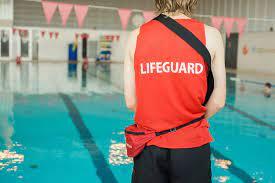By the American Lifeguard Association
Lifeguard training is crucial for ensuring the safety and well-being of individuals in aquatic environments. Effective training drills and exercises not only prepare lifeguards to respond quickly and efficiently to emergencies but also build their confidence and competence. The American Lifeguard Association (ALA) emphasizes the importance of rigorous and realistic training programs to develop lifeguards who are ready to handle any situation that may arise. Here, we explore some of the most effective lifeguard training drills and exercises.
1. Rescue Drills
Objective: To enhance lifeguards' ability to perform swift and safe rescues.
Description: Lifeguards practice different types of rescues, such as front and rear approaches, submerged victim rescues, and multiple victim rescues. These drills should be conducted in various conditions, including calm and rough waters, to simulate real-life scenarios.
Key Points:
Use rescue tubes and other flotation devices.
Emphasize proper body positioning and communication.
Practice entries, approaches, carries, and exits.
2. CPR and First Aid Drills
Objective: To ensure lifeguards are proficient in providing life-saving medical assistance.
Description: Lifeguards engage in regular CPR and first aid training sessions, including the use of automated external defibrillators (AEDs). These drills should involve both solo and team-based scenarios to build collaboration skills.
Key Points:
Practice chest compressions and rescue breaths.
Simulate different types of injuries and medical conditions.
Focus on quick assessment and decisive action.
3. Timed Swim Tests
Objective: To maintain and improve lifeguards' swimming speed and endurance.
Description: Lifeguards perform timed swim tests over various distances to ensure they meet the required fitness standards. This includes freestyle sprints, endurance swims, and towing exercises.
Key Points:
Set specific time goals for different distances.
Include both individual and relay swim tests.
Monitor progress and provide feedback for improvement.
4. Mock Emergency Drills
Objective: To prepare lifeguards for handling complex and unexpected situations.
Description: Simulated emergency scenarios are created, such as missing persons, spinal injuries, or mass casualty events. Lifeguards must work as a team to manage the situation, perform rescues, and provide first aid.
Key Points:
Rotate roles to ensure all lifeguards experience different aspects of an emergency.
Debrief after each drill to discuss performance and areas for improvement.
Incorporate communication with emergency services and bystanders.
5. Surveillance and Scanning Drills
Objective: To enhance lifeguards' vigilance and ability to detect potential hazards.
Description: Lifeguards practice surveillance techniques, focusing on scanning patterns, identifying distressed swimmers, and recognizing signs of trouble before they escalate.
Key Points:
Use both land-based and water-based observation points.
Implement drills that simulate crowded and busy aquatic environments.
Provide feedback on scanning efficiency and coverage.
6. Strength and Conditioning Exercises
Objective: To build physical strength and stamina necessary for effective lifeguarding.
Description: Lifeguards engage in a variety of strength and conditioning exercises, such as weight training, resistance workouts, and cardio routines. These exercises should target muscle groups essential for swimming and rescue operations.
Key Points:
Incorporate exercises like squats, lunges, and core workouts.
Ensure a balanced regimen that includes both strength and endurance training.
Monitor individual progress and adjust programs as needed.
Conclusion
The American Lifeguard Association is committed to providing top-tier training for lifeguards, ensuring they are equipped with the skills and knowledge to safeguard lives. By incorporating these effective drills and exercises into training programs, lifeguards can develop the proficiency and confidence needed to perform their duties at the highest level. Continuous training and practice are essential to maintaining the readiness and capability of lifeguards, ultimately contributing to safer aquatic environments for everyone.

